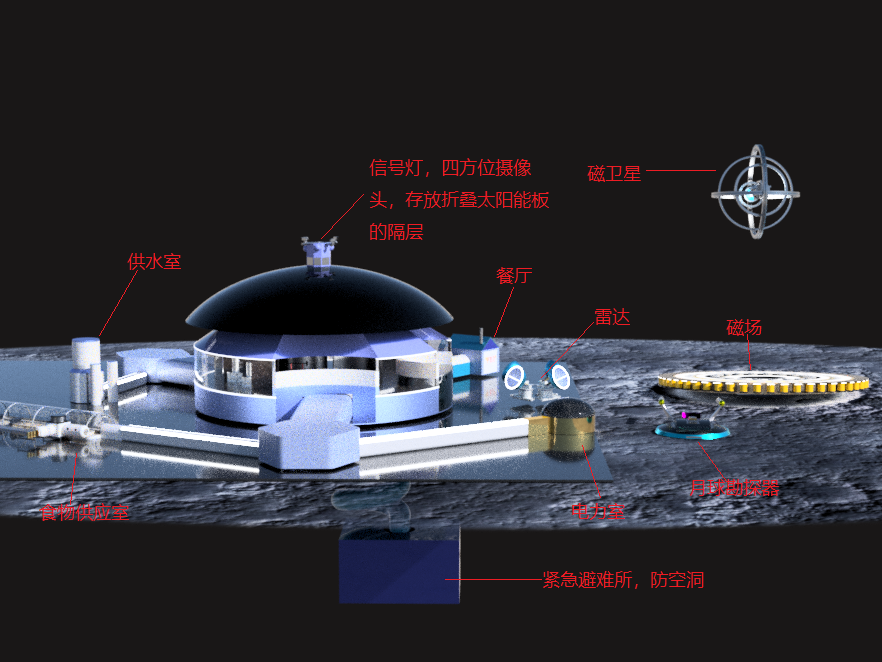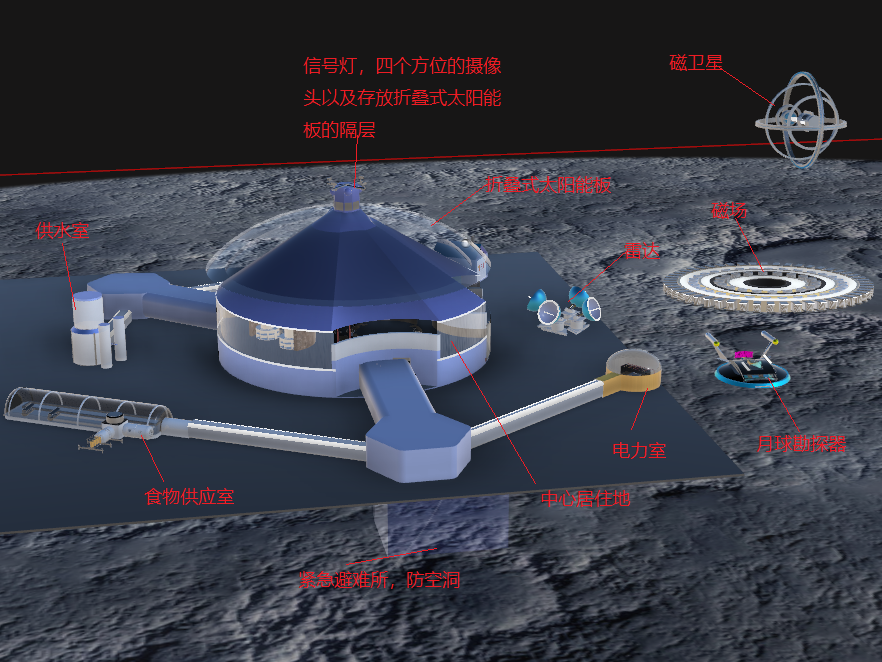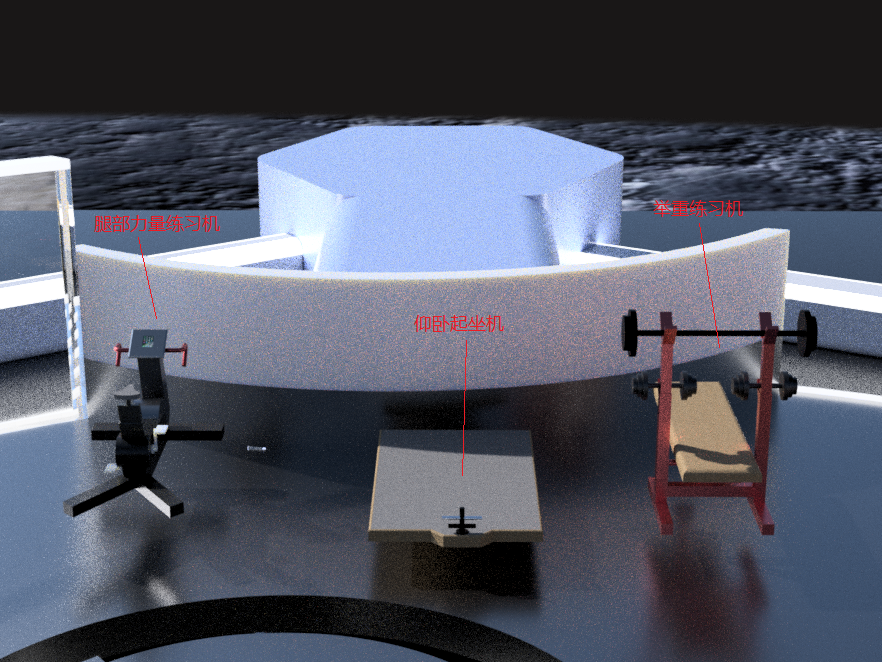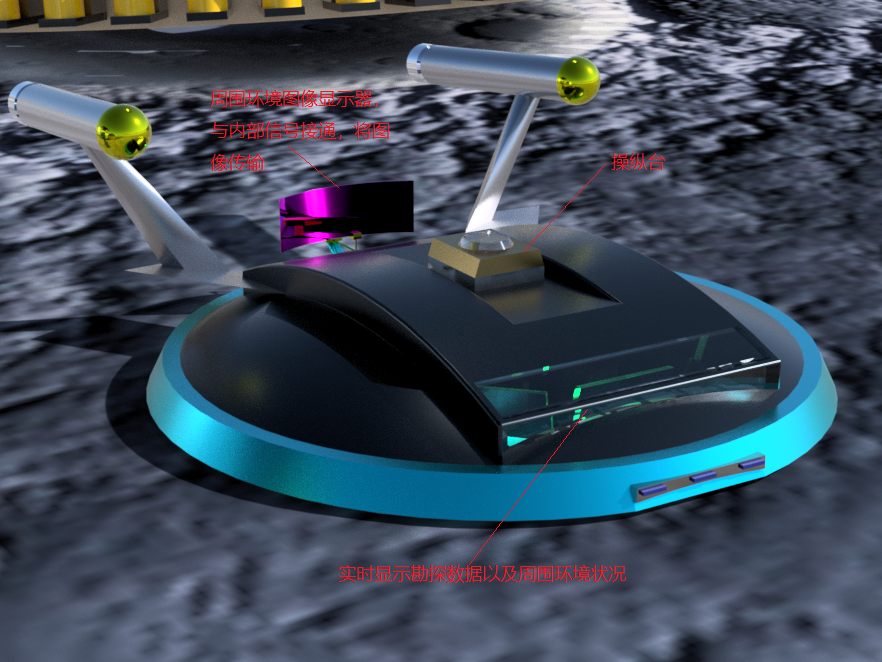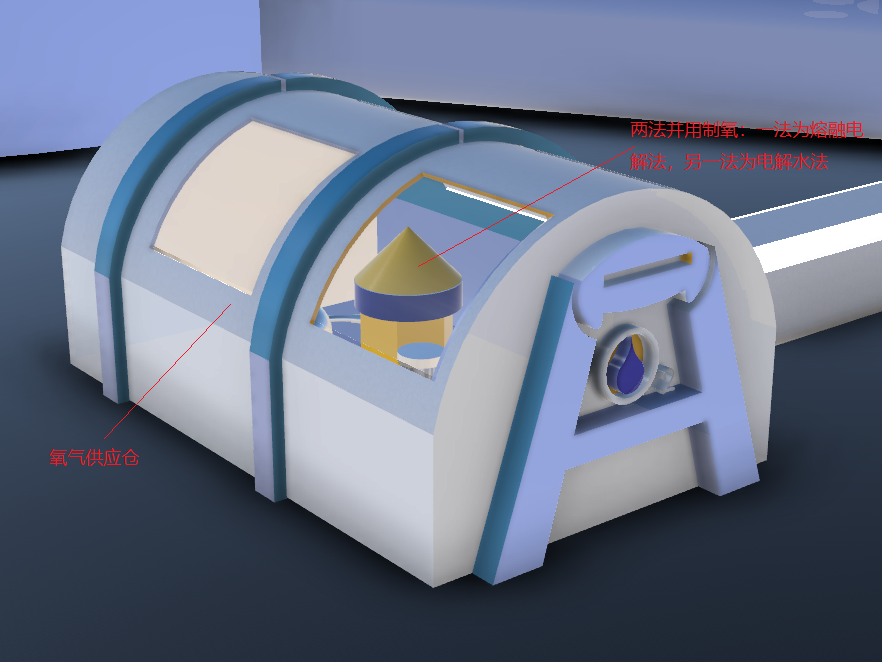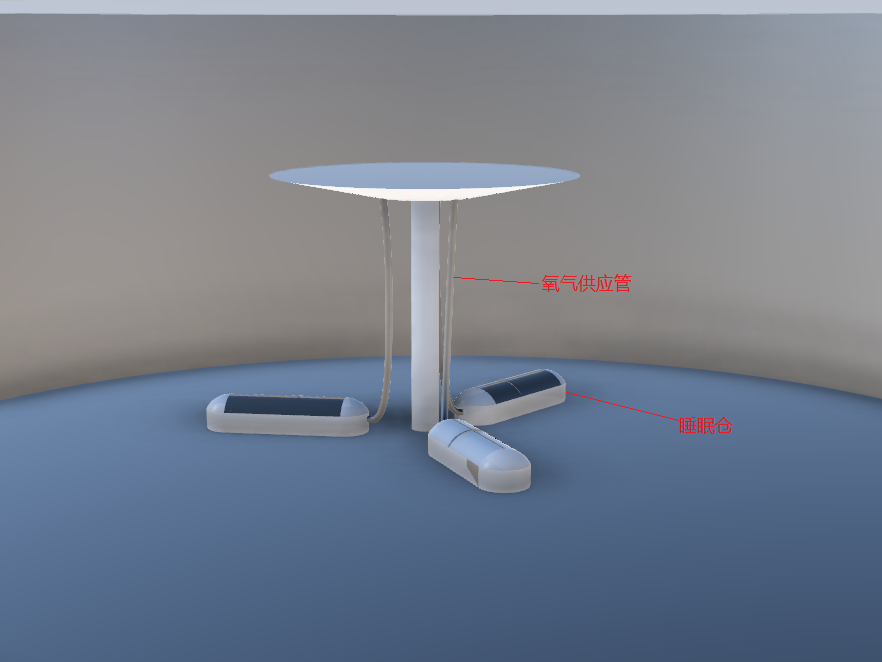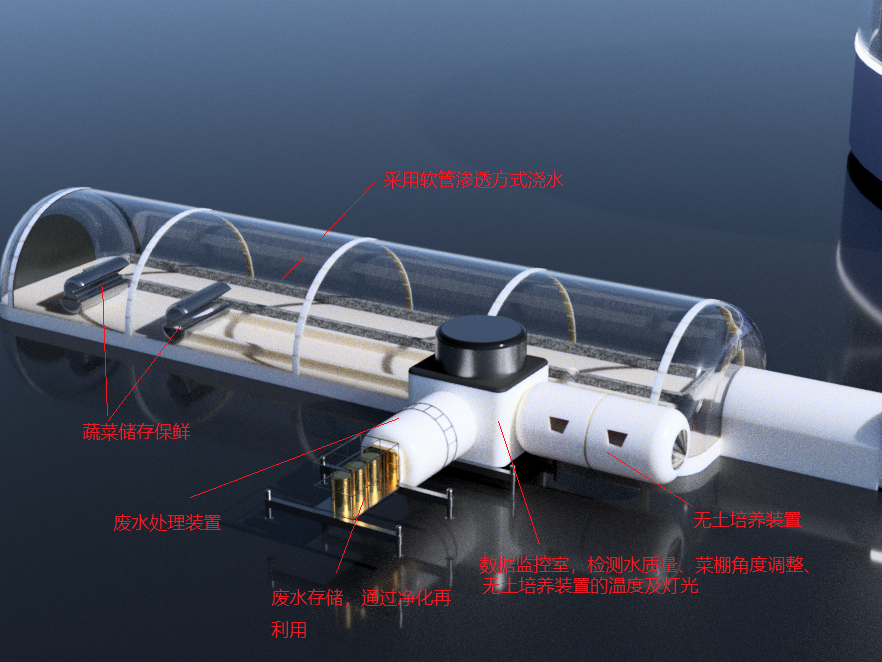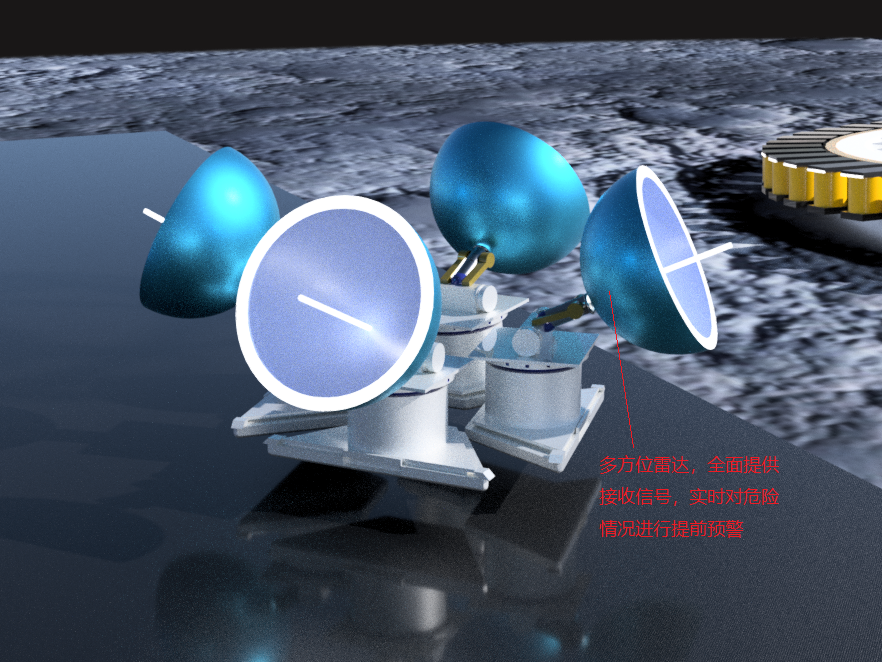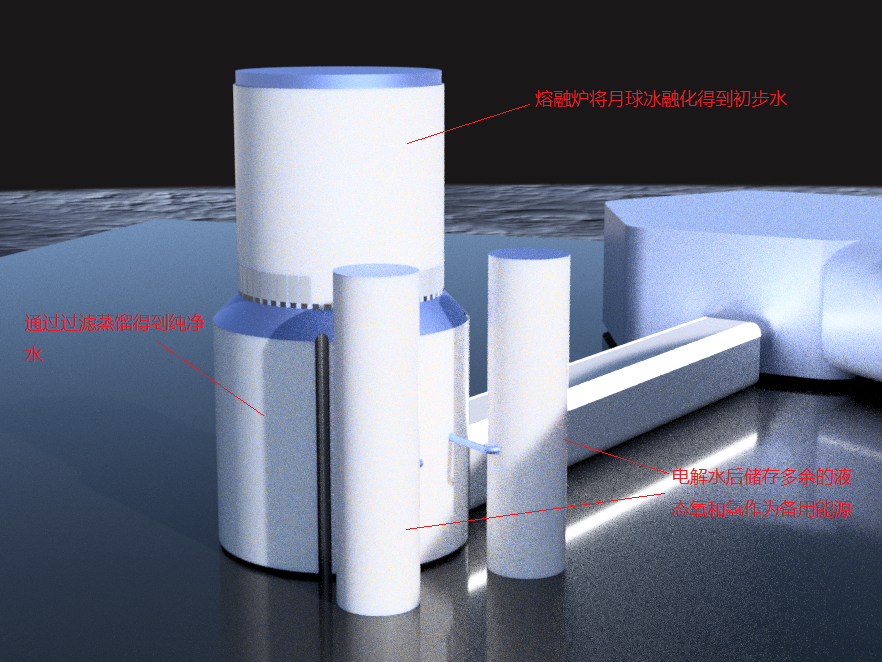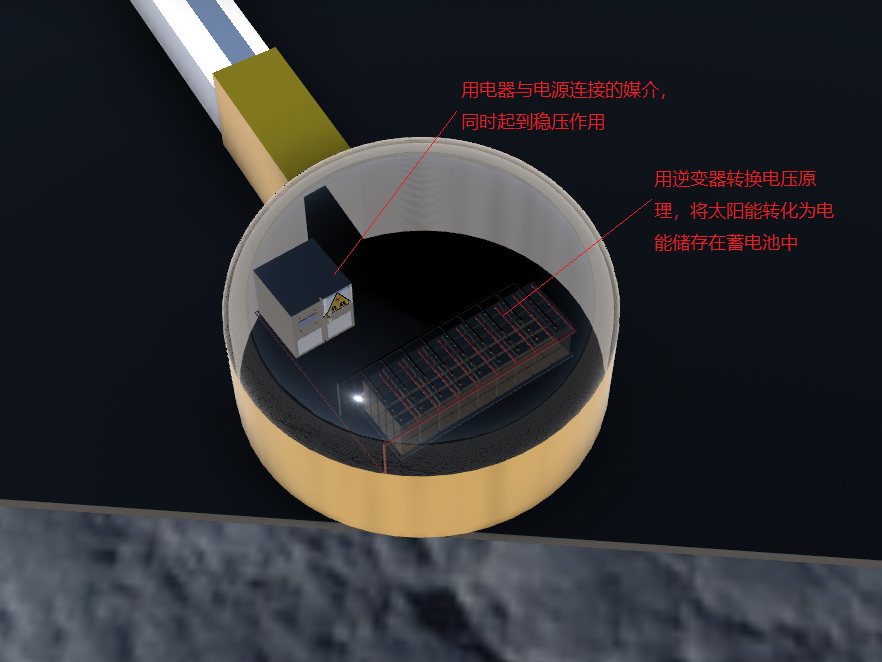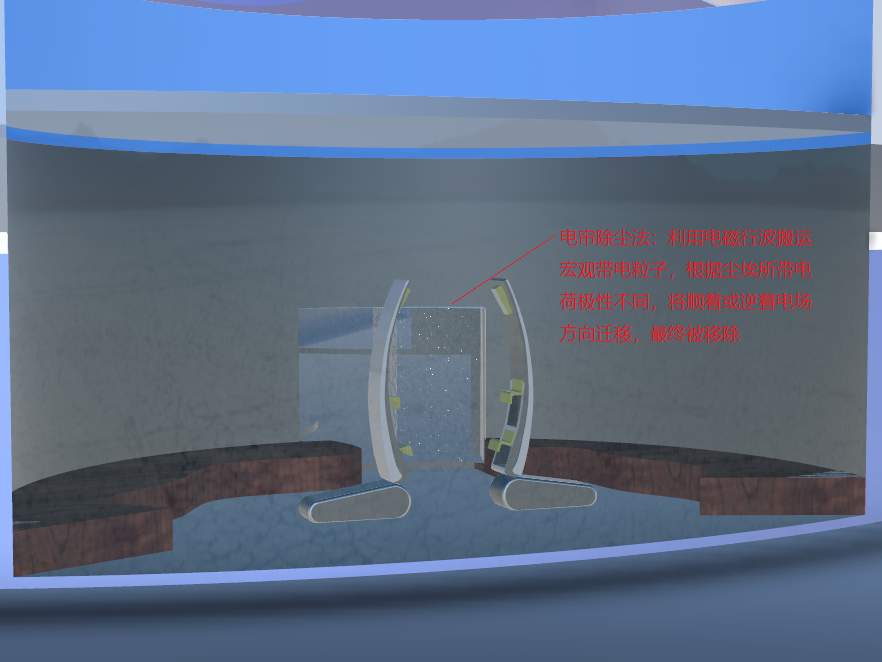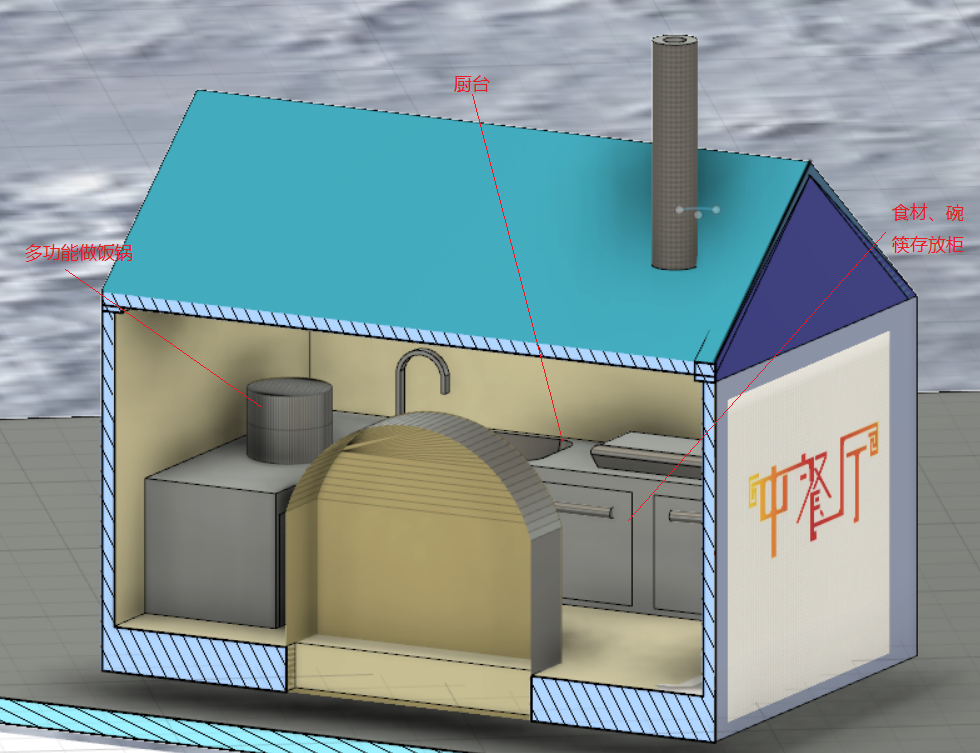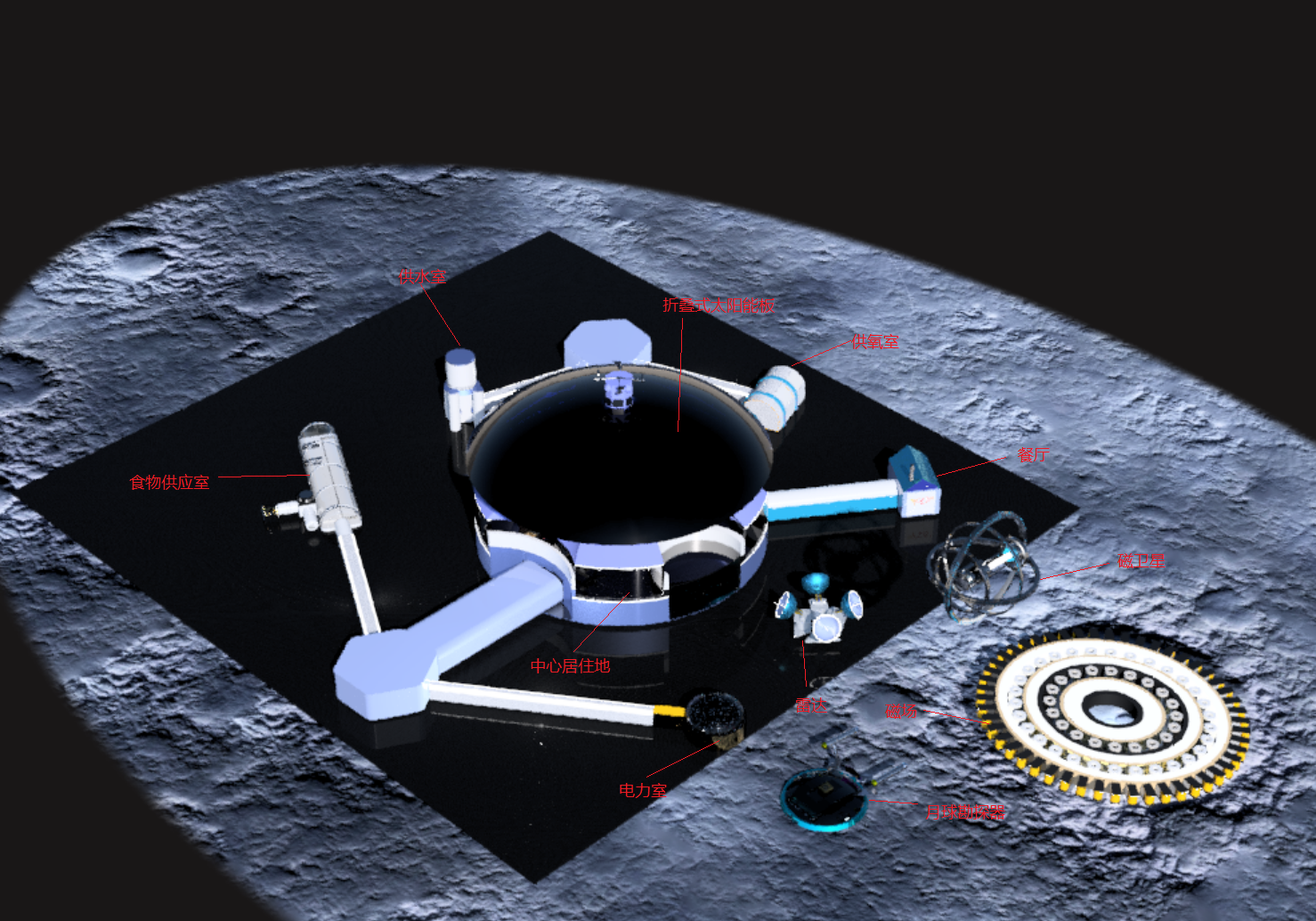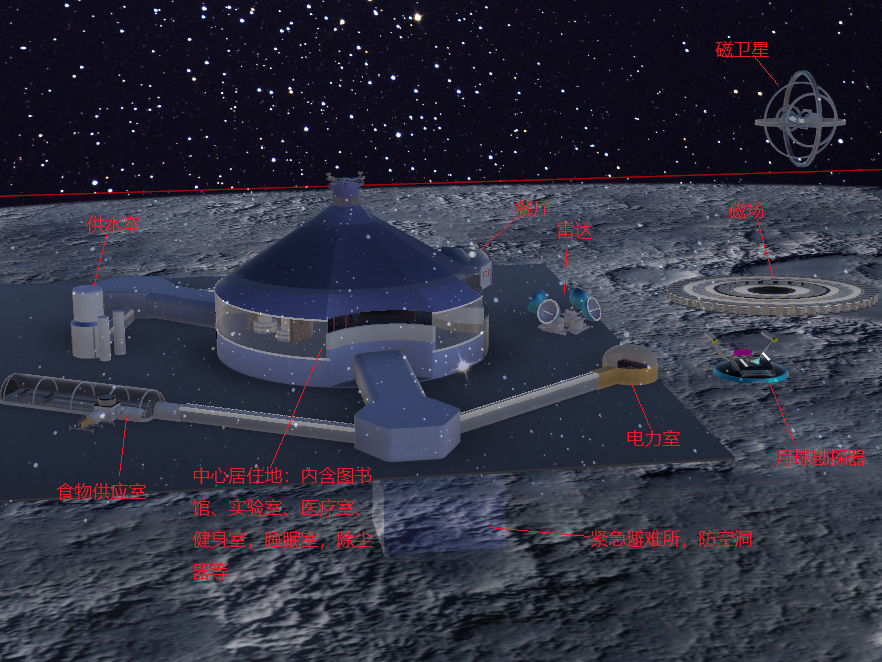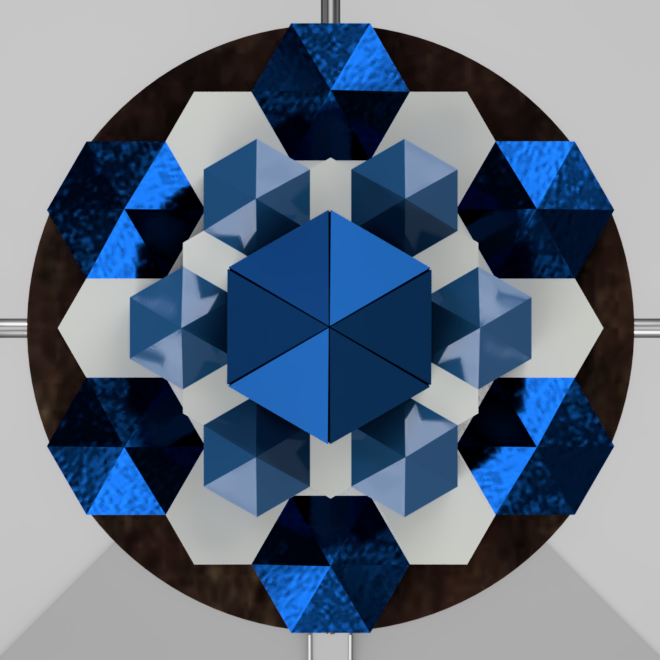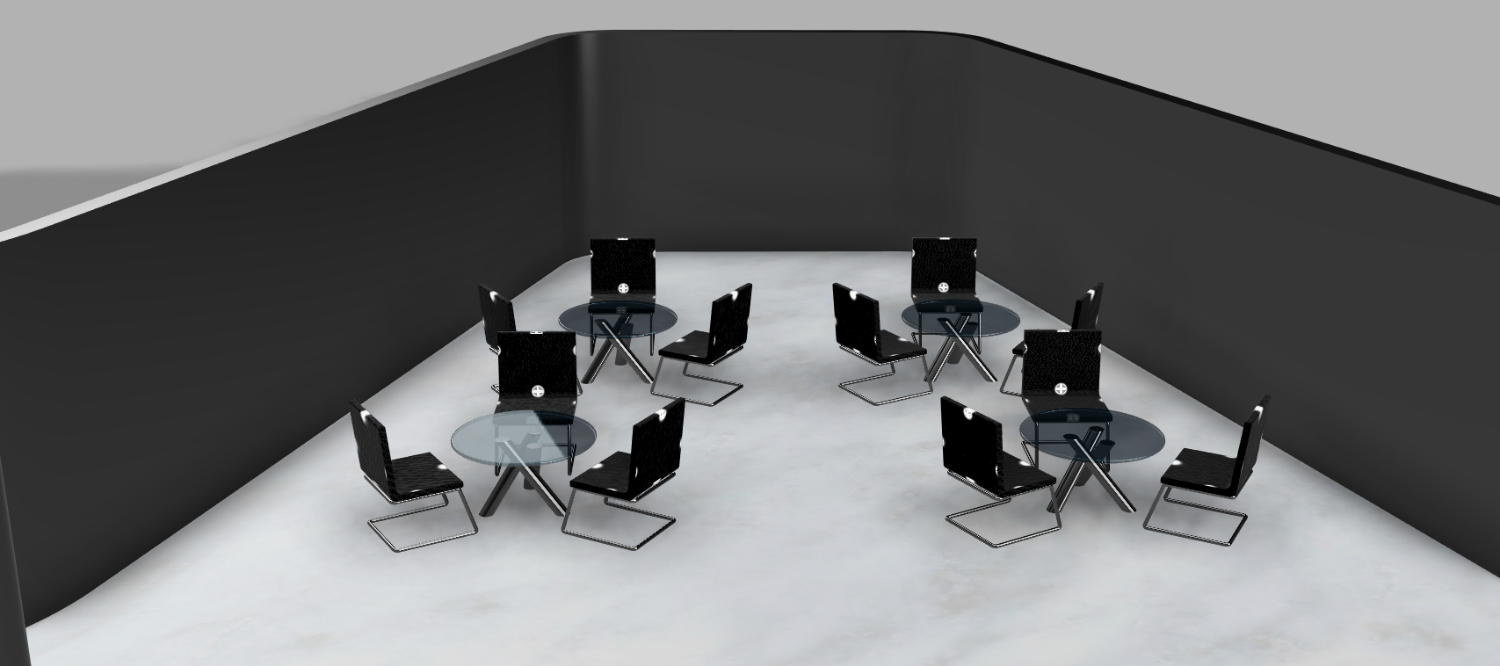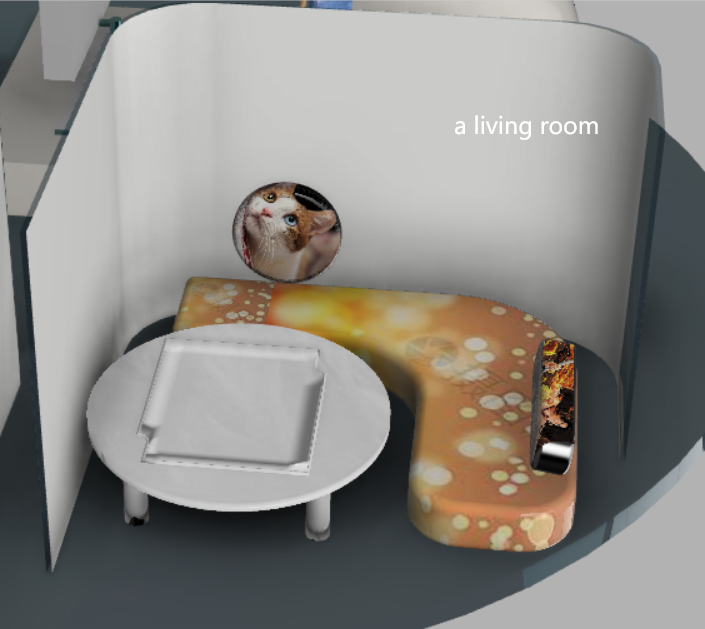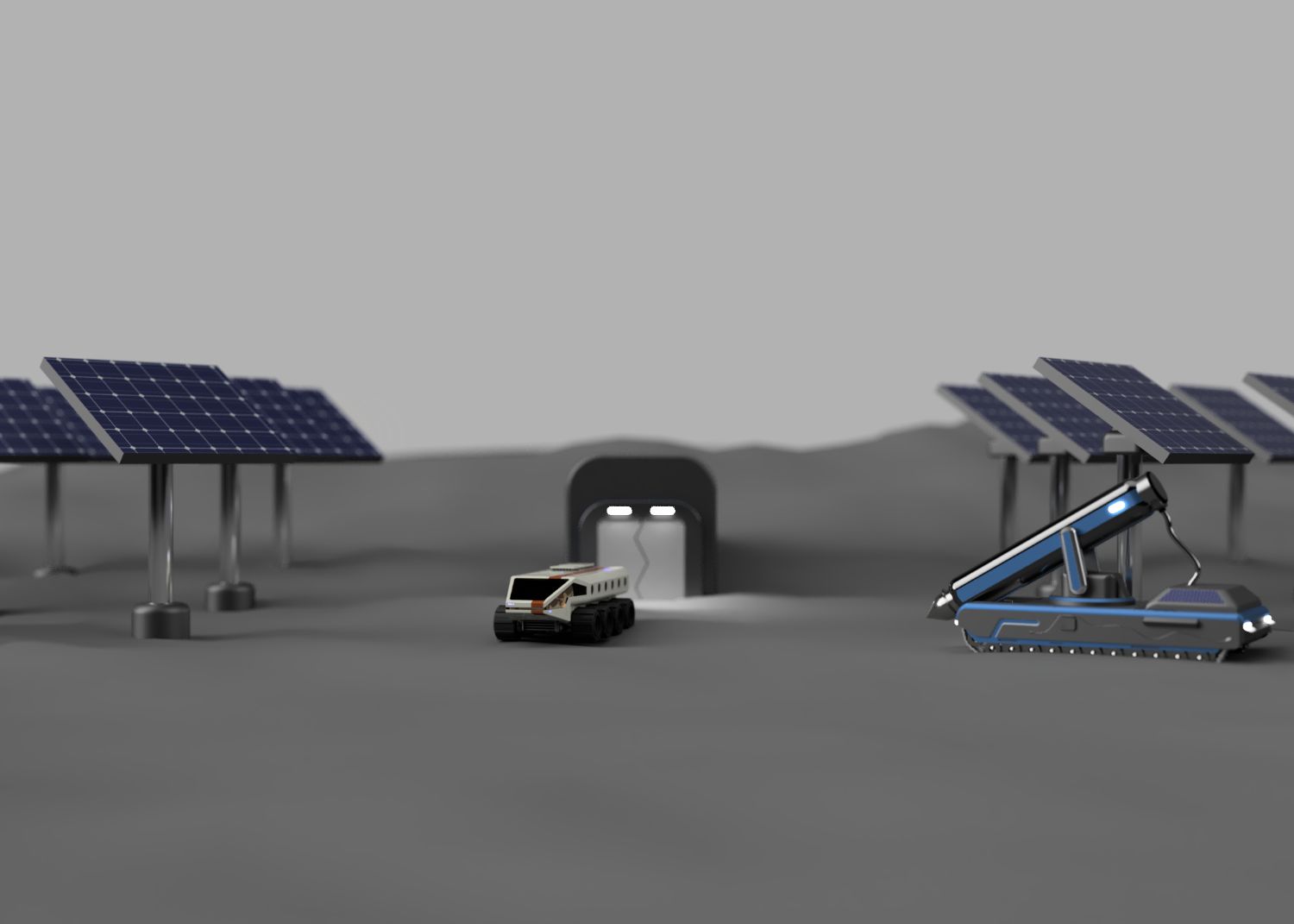Moon Camp Pioneers Gallery 2021-2022
In Moon Camp Pioneers each team’s mission is to 3D design a complete Moon Camp using Fusion 360. They also have to explain how they will use local resources, protect astronauts from the dangerous of space and describe the living and working facilities.
Team: Nebula
郑州轻工业大学附属中学 河南省郑州市金水区 China 19 3 / 2
External viewer for 3d project
|
Project description
Our Moon Camp program is divided into seven parts to accommodate all aspects of astronaut exploration on the moon. The central part is the astronaut residence, which is divided into two floors, with revolving stairs inside. The upper floor is the astronaut living room, library, conference room, fitness equipment, etc., and the lower floor is the medical room, laboratory and moon dust removal room. Four functional rooms are connected around it, which will make full use of the existing resources on the moon, such as lunar soil, lunar ice, sunlight, etc., and provide food, water, electricity and oxygen resources for the astronauts’ daily life by combining soil-less cultivation, hydrolysis, melting electrolysis, inverter voltage change and other technologies. The sixth part is divided into radar, explorers and other service instruments, real-time detection of the astronauts around the environment is safe, while flying explorers also make astronauts in the moon easy to move. The last part is the magnetic field.With the future development of science and technology, humans have the technology to launch a magnetic satellite . Therefore, we will generate electricity by cutting magnetic induction lines. |
|||
|
2.1 Where do you want to build your Moon Camp?
Our moon camp will be built at the lunar pole. First, the poles have a perpetual day environment that provides sufficient solar energy to maintain power supplies. Secondly, there are abundant lunar ice at the poles. Through the application of melting, filtration, electrolysis and other technologies, abundant multi-purpose water resources can be generated, which can not only supply drinking and bathing, but also help vegetable planting and food supply. Finally, the lunar soil is also readily available on the surface of the moon, which can be extracted for melting and electrolysis to provide sufficient oxygen, and the excess soil can be put into the laboratory for material analysis. 2.2 How do you plan to build your Moon Camp? Describe the techniques, materials and your design choices.
Materials: Water-related materials such as water pumps, pipes and valves are made of food-grade nickel stainless steel, which is safe and corrosion resistant. The water storage tank is made of polycarbonate, which is chemical resistant and oxidation resistant. BLX, RV type wire is used in the construction of power equipment, which is light in weight and can be used to connect the movable parts that need flexible connection; Monel alloy wire is used in the construction of oxygen production equipment, which has good corrosion resistance and excellent corrosion of hot concentrated lye; When building food manufacturing equipment, organic synthetic materials such as stone, emery, ceramics, glass and plastic are used to ensure that they are harmless and pollution-free to food, and are not corroded by disinfection chemicals such as pesticides. The residence of the center is constructed with anti-penetrating radiation materials, such as anti-radiation concrete, heavy metal materials such as lead and steel, as well as surface radiation protection materials, such as organic boards, coatings and inorganic compounds, to ensure that astronauts are not exposed to radiation hazards during the residence. Technology: filtration and electrolysis technology to purify water quality; The use of soil improvement and soilless cultivation techniques in vegetable supply; In the process of oxygen production using melting electrolysis and electrolytic water oxygen generation method; In the process of energy conversion, inverter is used to change voltage and cutting magnetic induction line to transform electric energy technology; The insulation water cooling technology is applied on the cable for converting solar energy to electric energy, which effectively prevents the resistance wire from being burned out when the temperature is too high. 2.3 The environment on the Moon is very dangerous for the astronauts. Explain how your Moon Camp will protect them. (maximum 150 words)
First of all, we provide astronauts with lunar habitation using radiation protection materials — organic boards, coatings, metal materials, polymer materials, organic, inorganic composite materials and inorganic nonmetallic materials to protect astronauts from radiation damage. Second in the us where the gate built in addition to dust on electric curtain, using electromagnetic wave handling macro charged dust, it is using an alternating current electrode, the traveling wave electric field parallel to dust raised by the electrostatic force or dielectrophoresis force and carrying dust, take charge of different polarity by dust, move down or reverse the direction of the electric field, will eventually on dust removal, To prevent damage caused by adsorption on astronauts. Finally, four radars are placed near the residence, which can detect the trend of dangerous unidentified objects such as meteorites in a full range of real-time. Once unidentified objects are close to the astronaut’s residence, the radar will give a warning, and the astronaut can be prepared in advance and transferred to the underground air-raid shelter for shelter. The shelter is made of a mixture of metal woven fabrics, metal materials and inorganic compounds produced by 3D printing technology to prevent meteorites from falling and ensure the safety of astronauts in the shelter. |
|||
|
2.4 Explain how your Moon Camp will provide the astronauts with:
|
Water
|
Food
|
Power
|
Air
|
|
We’ll harvest ice from the moon’s poles to make water. First, ice collected by lunar explorers is sent to a large furnace where it is melted to produce preliminary water. The initial water is then purified by distillation and filtration. Pure water can be obtained by distillation, while water containing minerals can be obtained by filtration. The water dispenser can also provide hot and cold water for the astronauts to shower, and meet the different needs of the astronauts for water. The extra water can also be decomposed into oxygen and hydrogen through the electrolysis device, and the hydrogen and oxygen converted into liquid by the compressor are stored in two small tanks nearby, as backup energy. |
Lunar soil is formed by weathering from lunar rocks, and its composition differs from earth soil in that it lacks organic matter, water, and air, and has more helium-3. At present, in order to grow vegetables, the lunar soil needs to be improved by adding materials such as organic matter after the decay of astronauts or plants and appropriate amount of water. Water can be provided by the reaction of hydrogen and oxygen, or by melting lunar ice. On the other hand, soilless culture can be used to grow vegetables and provide food for astronauts. |
The lunar camp site is located at the lunar pole, which is always day, so it uses solar energy from the moon as a source of energy. Foldable solar panels collect energy from the sun, which is stored by a solar controller in a battery bank, which raises the voltage through an inverter and then sends it to electrical equipment. At the same time, magnetic satellites can generate a strong magnetic field, and the technology of cutting magnetic induction lines to generate electricity can also supply power for radar, explorers and other service equipment. |
There are a lot of oxygen-containing substances such as silicon dioxide, ferrous oxide, aluminum oxide and calcium oxide in lunar soil, so we can extract oxygen by melting electrolysis. That is, when these oxygen-containing substances are heated to 1600 to 2500 degrees Celsius, an electric current is applied to them, and the ionized oxygen ions will spontaneously combine to form oxygen. Thermal reduction can also be used, where hydrogen is used to extract metal elements from minerals and produce water, which is electrolysed to produce oxygen directly. |
|
2.5 Explain what would be the main purpose of your Moon Camp.
The main purpose of our lunar camp is science, exploration of the moon for new resources, and alternative habitats for humans. In order to supply the astronauts daily necessities of life – food, oxygen, water, electricity, and astronauts into consideration to query information, to improve the physical quality of the demand and the security problems of live on the moon, we built the moon camp for astronauts to provide suitable living space, restaurants, a clinic, laboratory, sports hall, library, shelter and other facilities, All aspects for astronauts to provide security for food, clothing, housing and transportation. Instruments in the lab, such as the Matter analyzer, will help astronauts study lunar resources. The entire lunar camp will provide ample time and energy for astronauts to explore lunar resources. |
|||
|
3.1 Describe a day on the Moon for your Moon Camp astronaut crew.
At 7 a.m., the astronauts get up and wash, and at 7:30 a.m., they go to the cafeteria to make and eat breakfast together. At half past eight, I will drive the flying lunar explorer to collect the lunar soil. At ten o ‘clock, I will enter the oxygen supply room and place the collected lunar soil in the memory of the lunar soil. When the switch is turned on, the machine will automatically start to prepare oxygen by melting electrolysis. During this process, the astronauts have to open the oxygen pipes to make the living area, vegetable room, restaurant and so on full of oxygen, easy to breathe. At the same time, astronauts can collect some of the excess lunar soil and store it in the laboratory for material analysis. Before entering the laboratory inside the residence, the astronauts will stay for about five minutes after entering a gate on the first floor while an electric curtain works to remove the dust. At half past eleven, the astronauts entered the restaurant, took out the vegetables that had been reserved and began to prepare and enjoy lunch. At 12:30 the astronauts entered the second floor lounge for lunch. After lunch at 2 o ‘clock, the astronauts went to the medical room on the ground floor for daily fitness tests. Then they met at the conference table in the library at 3 o ‘clock to make research plans. Five astronauts went to collect lunar ice and put it into a melting furnace for initial melting to obtain water. After the water was distilled and filtered by a machine, the astronauts could drink water. At the same time, water can be channeled into the vegetable room to help grow vegetables. Enter the vegetable planting area at 6:30 for the collection and storage of vegetables and fruits. Be ready for dinner by 7:20. At 7:30, you can go to the sports room on the second floor for proper exercise and relaxation. The astronauts arrived at the laboratory at 8 o ‘clock to explore lunar resources. At 11:00 the astronauts can go to the lounge and sleep. In the course of a day, if there is danger approaching, radar alarm, astronauts can quickly slide into the shelter shelter. |
|||


